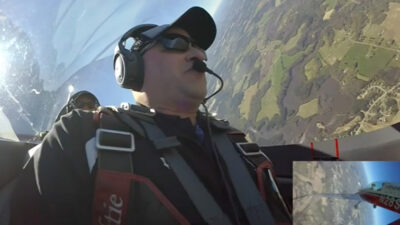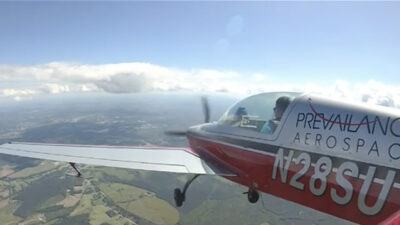A Step-by-Step Guide to Prevent Skills Atrophy
Congratulations, you’ve finally earned every certificate you’ve ever wanted. Well done! Unfortunately, you have already begun to experience “skills atrophy”, affecting all that you have just worked so hard to learn. But you just completed training!
There has been limited research into skills atrophy in aviation, but the FAA conducted a study in 1983 that still proves relevant today. According to this study, most pilots experience the greatest loss of skill in the first eight months following initial training, with the greatest degradation experienced by those pilots who flew very little or didn’t routinely practice fundamental skills learned during initial training 1. It applied to pilots of all aircraft types, and at any time in their aviation career.
Automation also plays a role in skills atrophy. As aviation technology continues to improve and provide ever more assistance in the cockpit, pilots increasingly rely on it and find themselves manually flying less and less. However, there are definitive steps you can take to address skills atrophy and keep your flying skills at their highest level.
Step 1: Delay Verbal Learning Loss. Remember all those books, briefs, and check ride study sheets you used so diligently while in training? Review them! The majority of what you learn through verbal learning will be lost in the first 24 hours after you leave the classroom. Combat this by reminding your brain what it already knows, frequently. It takes your brain far less effort to relearn a concept through review than it does to learn it the first time 2.
Step 2: Combat Motor Learning Loss. Only a small portion of what a pilot does on a daily basis can be retained through Verbal Learning. The second type of learning is Motor Learning and this is where skills atrophy is the greatest issue for pilots. The FAA study found pilots experience a loss of learned motor skills if they do not regularly practice routine and critical procedures while flying.
In 2013, the FAA released a study titled “Operational Use of Flight Path Management Systems” where they analyzed the correlation between aviation incidents and the use of automated systems. Findings concluded that an overuse of cockpit automated systems leads to pilot skills atrophy, which manifests as degraded manual flying performance. In fact, 60% of safety incidents reviewed were due to manual handling/flight control errors 3.
In short, flying is not like riding a bike! To some degree skills atrophy is inevitable. The most effective means of combating it is to FLY as much as possible and practice critical skills while airborne to maintain proficiency. The latter is referred to as continuation training.
Step 3: Improve Skills Through Continuation Training. Major findings in the FAA skills atrophy study indicate continuation training is the only way to maintain proficiency. This continuation training should include advanced procedures which challenge the pilot beyond his or her initial training envelopes, as emergencies are always coupled with significant surprise and startle.
The NTSB recently released their “Most Wanted” list for 2017-2018 which included ways to prevent Loss of Control – Inflight (LOC-I) 4. Take your training to the next level and complete a course that directly targets some of these LOC-I events, like Spin Recovery and/or Upset Prevention and Recovery Training. Only by experiencing some of these advanced scenarios in the cockpit will your motor skills mature beyond the point of initial training.
The moment you complete a dedicated flight training phase with an instructor, your skills begin to atrophy. Take control of your own safety and review your training materials often. Fly in manual mode as often as practical. Practice those fundamental skills you learned during training. And finally, beat skills atrophy by experiencing advanced, live scenarios in an airborne training environment that challenges you. You control your own skills proficiency!
1 Childs, J. M., Spears, W. D., & Prophet, W. W. (1983). Private Pilot Flight Skill Retention 8, 16, 24 Months Following Certification. Pensacola: Federal Aviation Administration Technical Center.
2 Ebbinghaus, H. (1885). Memory: A Contribution to Experimental Psychology. Retrieved from Classics in the History of Psychology: http://psychclassics.yorku.ca/Ebbinghaus/index.htm
3 Federal Aviation Administration PARC/CAST Working Group. (2013). Operational Use of Flight Path Management Systems. Washington DC: Federal Aviation Administration.
4 National Transportation Safety Board. (n.d.). National Transportation Safety Board. Retrieved April 26, 2017, from Prevent Loss of Control in Flight in General Aviation: https://www.ntsb.gov/safety/mwl/Pages/mwl5-2017-18.aspx
Congratulations, you’ve finally earned every certificate you’ve ever wanted. Well done! Unfortunately, you have already begun to experience “skills atrophy”, affecting all that you have just worked so hard to learn. But you just completed training!

Prevailance Aerospace is a UPRT provider that has been working with corporate, government, and general aviation pilots to improve safety in the aviation industry. Prevailance Aerospace uses Extra 300 Series Aircraft for training and our pilots are experienced aviation professionals from various military and general aviation backgrounds. We know that successful aviation endeavors are accomplished through an uncompromising commitment to safety, impeccable professionalism, tremendous attention to detail, and constant improvement.
http://prevailanceaerospace.com
© 2025 Prevailance Aerospace. All Rights Reserved.
Next ArticleRelated Posts

Rise Up for the Next Generation
There is no doubt in my mind that flying is the way mankind is meant to travel, yet the continued success and growth of the industry requires a refined approach to safety. As someone who flies commercially and with a new interest in a career in aviation, I want the reassurance that the pilot in command (PIC) and crew are adequately prepared if and when an aircraft ends up in an upset.

Three Considerations That Set Pilots Up for Success
Constantly reviewing aviation accidents and incidents is challenging. As an instructor, it is not only the injuries and fatalities that make it hard, but the sheer magnitude of avoidable aspects of each incident. These safety reports prove that every Pilot in Command (PIC) is accountable for what transpires.

